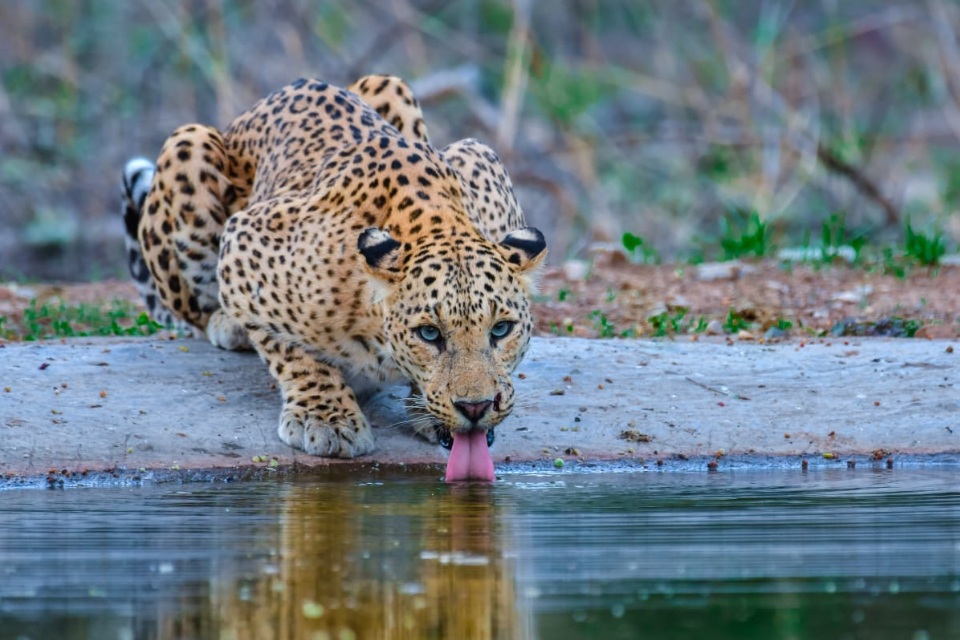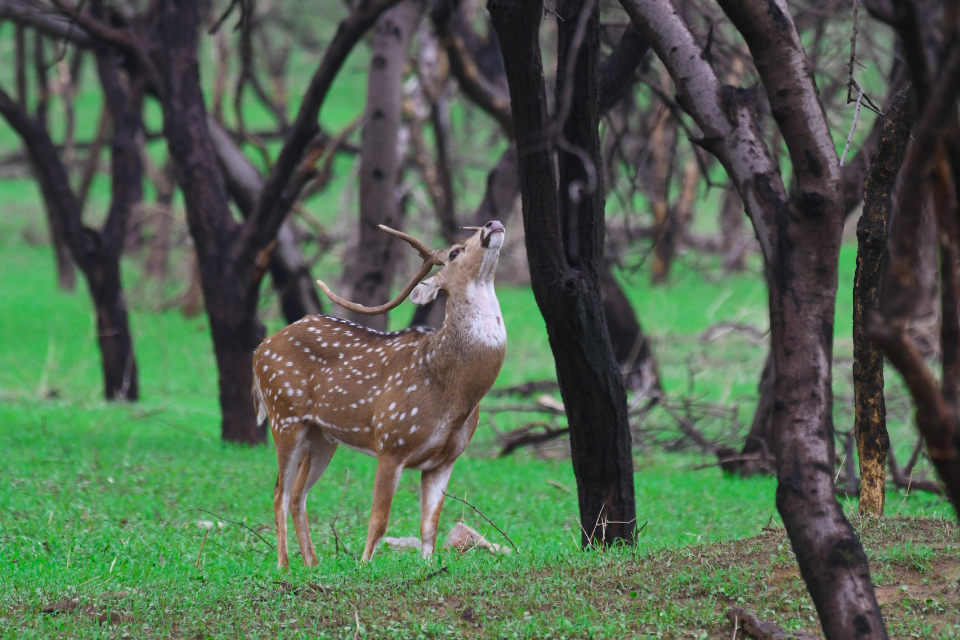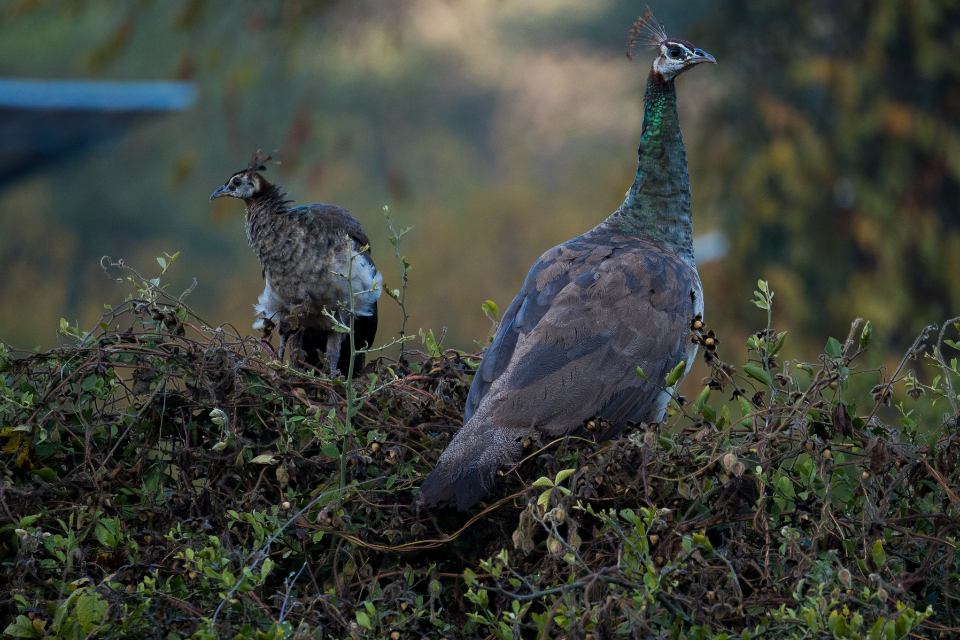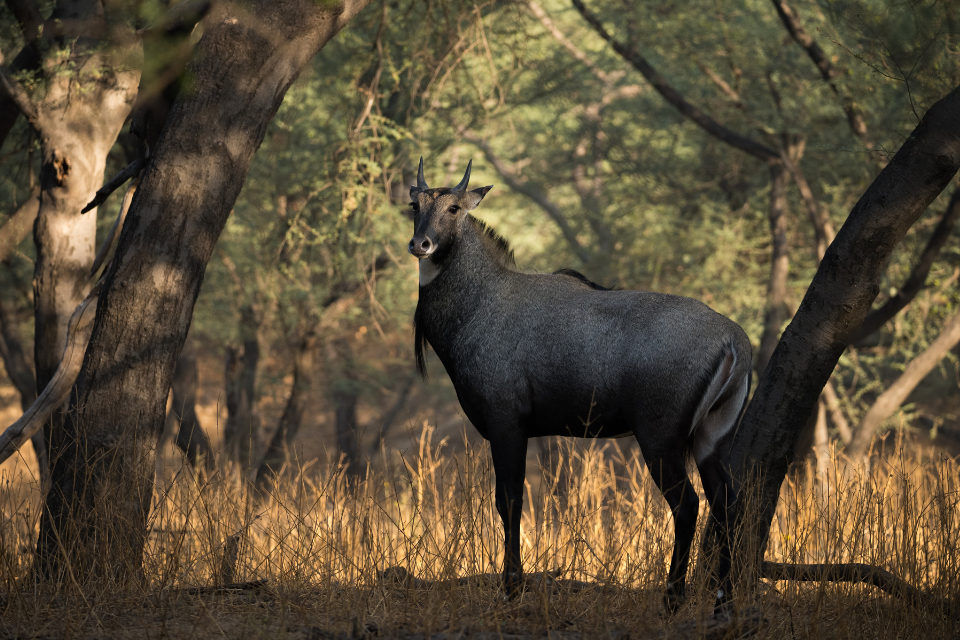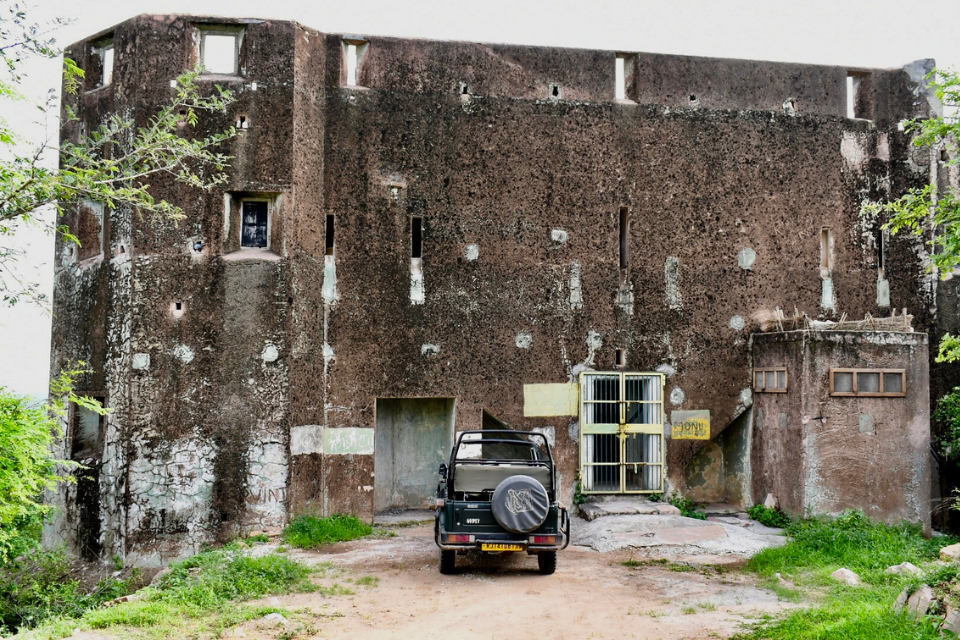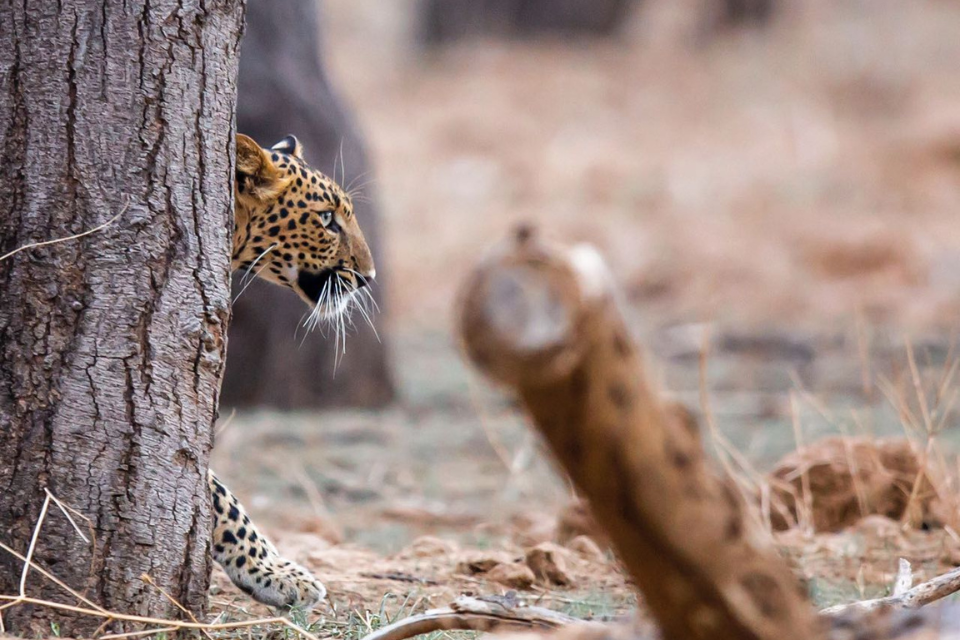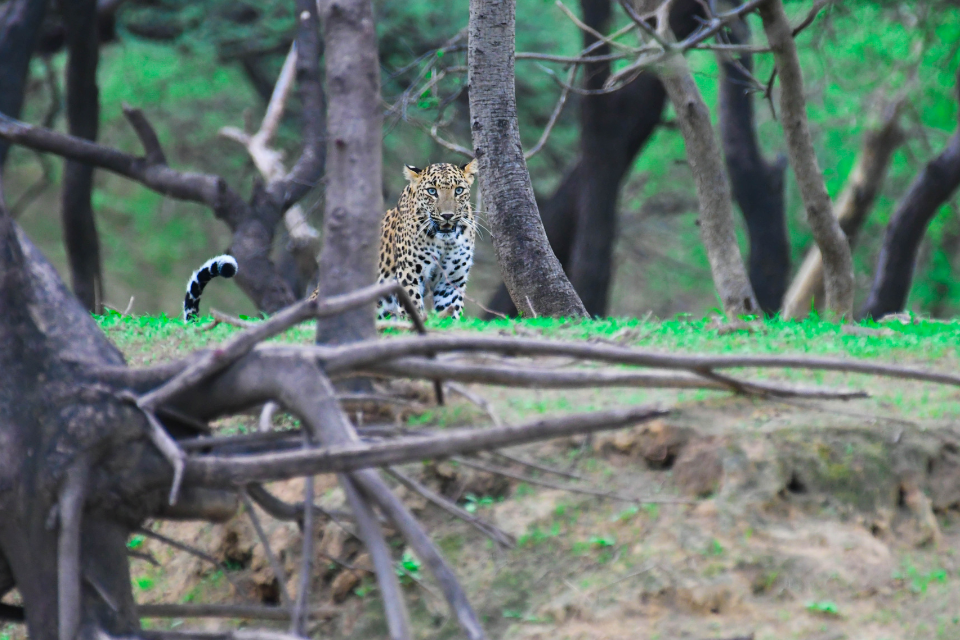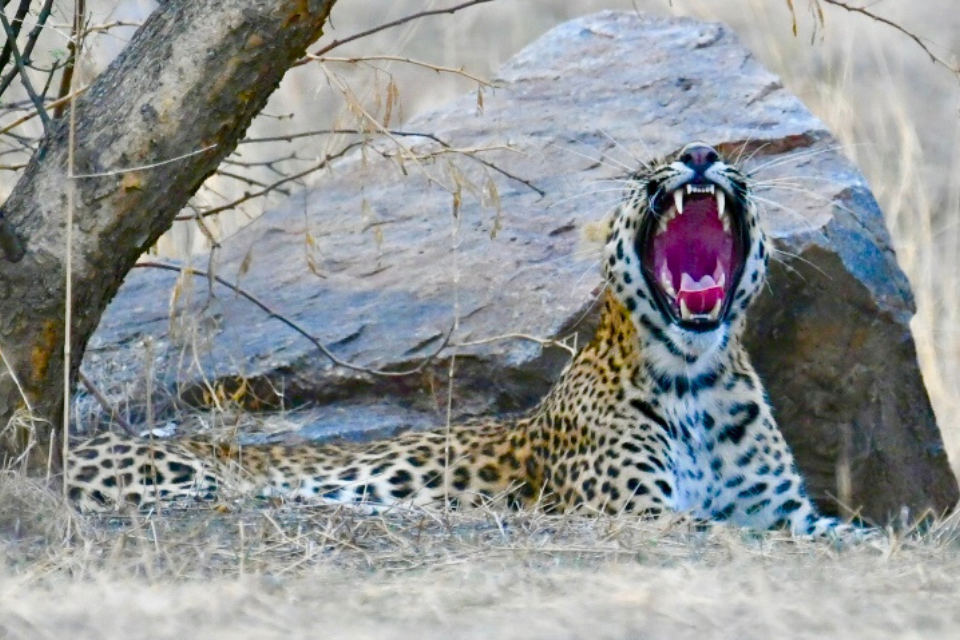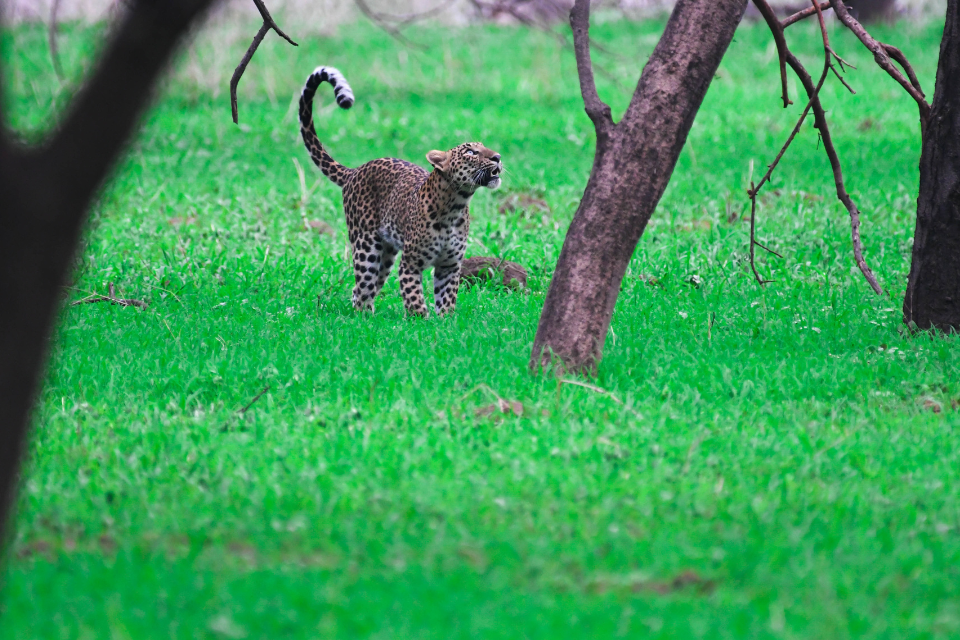- August 20, 2025
Monsoon Safaris: What Changes (Jhalana, Amagarh & Beed Papad)
TL;DR
Monsoon (July–September) flips Jaipur’s leopard safaris from dusty browns to lush green. Sightings don’t stop, but they shift: animals spread out as water is everywhere, grass grows taller, and calls echo differently. You’ll rely more on tracks, alarm calls, and ridge scanning than on “wait at one waterhole.” Operations in Jhalana and Amagarh generally run year-round, though heavy rain can cause temporary suspensions—always check the official portal/operator updates before you go. Beed Papad (launched June 5, 2025) runs with similar weather dependencies.
Why monsoon changes the game
1) Water is everywhere
In summer, wildlife funnels to a few dependable water points. In monsoon, natural puddles and seep lines pop up across valleys. That means fewer predictable stops and more moving searches along trails, saddles, and rocky ledges.
2) Vegetation structure
Tall grasses, fresh leaf flush on acacia/khejri, and creepers create visual clutter. Leopards still use edges—but you’ll spot ear tips, tails, and silhouettes more often than full-body frames. Expect shorter, surprise encounters.
3) Sound travels differently
Wet foliage muffles hoofbeats but carries certain calls. Learn to separate langur “khok” (predator on ground), chital barks, and peafowl alarm rattles; in monsoon, this audio radar becomes your best friend.
4) Micro-wildlife boom
Frogs chorus, insects explode, raptors ride post-storm thermals, and reptiles bask on warm rock after rain breaks. If you love behavioral photography, monsoon rewards patience.
Zone-by-zone: what actually changes
Jhalana Leopard Reserve
- Pattern shift: Less waterhole sitting; more valley patrols and ridge scans at first/last light.
- Routes & timing: Timings broadly follow season-based schedules; operations are commonly described as open all year, with weather-based pauses possible (short-notice closures for safety). Always reconfirm slot status on the booking day.
- What to watch: Fresh pugmarks on damp soil, langurs calling from high trees after squalls, and sun breaks when cats warm up on exposed rock.
Amagarh Leopard Reserve
- Edges & corridors: Dense greens near Galta Ji / Agra Road add cover. Scan saddles and ridge cuttings after rain; alarm calls often cascade along the slope.
- Schedules: Operators list monsoon slot timings (Aug–Oct) similar to other seasons, but—as everywhere—heavy rain = possible rescheduling.
- What to watch: Post-shower movement when light returns; herbivores grab quick drinks; jackals shadow cats more openly on wet tracks.
Beed Papad (Maila Bagh–Beed Papad, Nahargarh Sanctuary)
- New routes, green views: Launched June 5, 2025, with two routes, new waterholes and ~19 km of tracks. In monsoon, expect broader dispersion and lively bird/reptile action around the restored basins.
- Access & capacity: Entry via Vidyadhar Nagar; limited registered gypsies keep pressure low. As with other zones, weather can pause drives for safety.
Sightings: what improves, what gets harder
Improves
- Landscapes & behavior: Fresh greens, dramatic skies, and post-rain activity; predators and prey both shift routines, giving you unique frames (steam rising off rock, droplets on whiskers).
- Bird life: Insect surge = hawking activity (bee-eaters, drongos); post-storm raptors soar; waterbirds use temporary pools.
Harder
- Line-of-sight: Tall grass and leaf cover hide bodies; you catch partials.
- Predictability: Wide water availability = fewer “must-visit” pools.
Comfort: Humidity, slick tracks, and intermittent showers demand better gear discipline.

Your monsoon playbook (step-by-step)
1) Choose slots smartly
- Dawn for ridge silhouettes, steaming rocks, and crisp calls.
- Late afternoon to dusk for movement windows after showers.
- If a downpour hits mid-drive, hold your ground (safely parked): animals often resume quickly when rain softens.
2) Read sign—don’t just drive
- Pugmarks: In wet mud, edges blur fast; the sharpest edges = the freshest.
- Scat & spray: Rain washes scent; fresh sprays glisten on low shrubs/rocks.
- Broken grass “windows”: Look for subtle V-shaped openings where bodies pushed through.
3) Rotate spots deliberately
- Instead of circling the whole zone, pick 2–3 micro-areas (one valley waterline, one saddle, one ridge edge) and rotate every 12–15 minutes with engine off. This beats chasing rumours across green walls.
4) Trust calls + topography
- Calls with heads fixed toward one slope? Scan that edge; cats hug contours.
- Multiple species calling (langur + chital)? Stay—multi-species alarm is your best lead.
Photography in the rain (what actually works)
- Fast shutter first: Start ~1/1000s for walking cats; ride ISO as needed; f/4–f/5.6 for subject isolation in clutter.
- Expose for highlights: Leopard in a sun patch, dark wet background—meter for the brightest fur to save rosettes.
- Polarizer? Skip it in low light; use a simple lens hood to cut flare and raindrops.
- Anti-fog discipline: Keep gear in the bag with silica gel between scenes; don’t wave cold glass into humid air repeatedly.
- Stability: Sit down; use a bean bag. Tripods/gimbals get fussy in tight gypsy rows.
- Rain care: Carry two microfiber cloths (one strictly for front elements), a few zip bags, and a cheap shower cap as an emergency cover.
What to pack (monsoon edition)
- Light rain jacket + quick-dry layers (cotton stays soggy).
- Neutral colors (olive/brown/khaki) that blend with scrub.
- Closed shoes with grip; the gypsy floor gets slick.
- Cap with brim (keeps lenses & glasses cleaner).
- Insect repellent and a small towel.
- Dry bag for camera + phone; a spare phone pouch helps in heavy spells.
- Electrolytes & water—humidity dehydrates quietly.
Safety & ethics (even more important in rain)
- Slow and steady: Tracks can be slippery; let the driver set pace—no pressure for overtakes.
- Zero bait / zero playback / zero flash.
- Keep distance: Vegetation reduces escape options; don’t block an animal’s path.
- Engine off at sightings: Hear the calls, not your idling.
Delay geotags: Especially near dens/sensitive slopes after storms.
Booking & operations during monsoon
- Jhalana: Multiple operator/guide sites state year-round operations, including monsoon, with seasonal timings. However, heavy rainfall can trigger temporary suspensions or route limits; check day-of with your operator or the booking portal.
- Amagarh: Timings posted for Aug–Oct indicate operations across monsoon months; again, weather rules.
- Beed Papad: New zone (launched June 5, 2025) with limited vehicles and two routes; assume weather-based pauses similar to the others.
Note: Some travel blogs claim “monsoon closure” for Jhalana; others (including official/booking-oriented pages) say it operates year-round. Reality on the ground: monsoon access is typically open but can be paused after big spells. Always reconfirm your specific slot before departure.
Sample monsoon game plans (copy-paste for your driver)
Plan A – Post-rain bounce (afternoon to dusk)
- Start at a saddle with good sightlines (listen first).
- Move to a valley waterline (check for sharp pugmarks).
- Park at a ridge-edge turnout to scan for silhouettes as light breaks through clouds.
Plan B – Misty morning (dawn)
- Ridge-top scan stop (5–7 minutes).
- Drop into drainage line with soft mud (read tracks + calls).
- End at a screened waterhole for birds and small mammals.
Beyond leopards: monsoon specials to watch
- Striped hyena: Often crepuscular; look for slow, purposeful trots on open ground after showers.
- Golden jackal pairs: Patrol edges of valleys; easier to see on wet tracks.
- Jungle cat: Brief, low runs across clearings; double-check “moving grass” illusions.
- Raptors: After rain, scan thermals above ridges—shikras, kites, eagles cruising for movement.
- Herps: Monitor lizards bask as soon as sun reappears; snakes may cross warmed asphalt—drive carefully.
FAQs
1) Are safaris open during monsoon in Jaipur?
Usually yes. Jhalana and Amagarh list seasonal timings through monsoon and are often described as open year-round. That said, heavy rain can temporarily suspend a slot or close a track for safety. Beed Papad follows similar weather logic. Always reconfirm with your operator/OBMS on the day.
2) Is monsoon good for leopard sightings?
It’s different, not worse. Animals disperse (water everywhere), foliage is dense, and you rely more on calls, tracks, and topography. You may get short but cinematic windows—especially post-shower.
3) What are typical monsoon timings?
Operators publish season-based slots (e.g., Aug–Oct at Amagarh; similar seasonal grids at Jhalana). Exact times can change—follow your permit and day-of guidance.
4) Will I get soaked in an open gypsy?
Carry a light rain jacket, dry bag, and microfiber cloths. Drivers often keep a tarp/poncho handy; showers pass quickly.
5) Is Beed Papad worth visiting in monsoon?
Yes—freshly restored waterholes/grasslands and low vehicle caps can make for calm, scenic drives. Just expect dispersed movement vs. classic “waterhole sits.”
Disclaimer All images used in this blog are either sourced from public domain or credited to their respective owners. If you are the copyright holder of any image and wish to request its removal or proper attribution, please contact us at [email protected]



